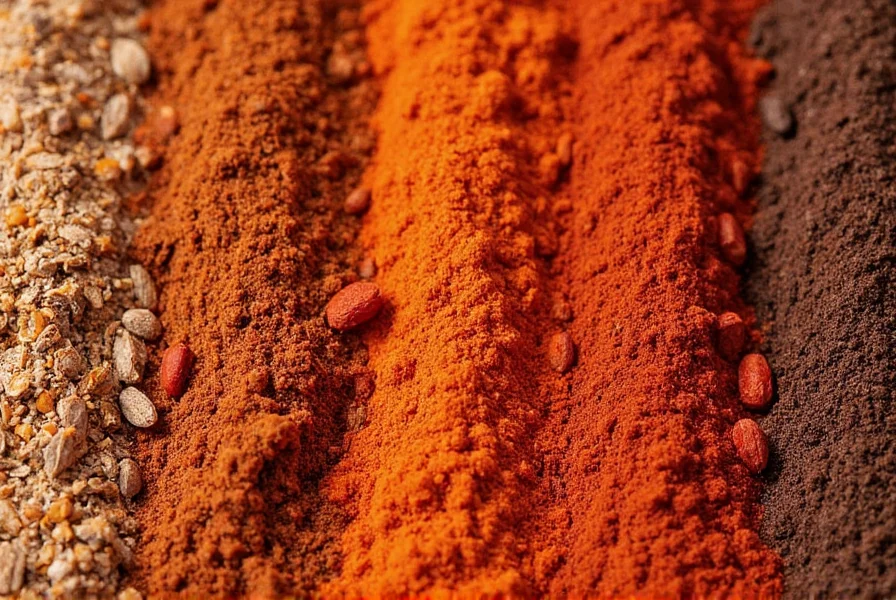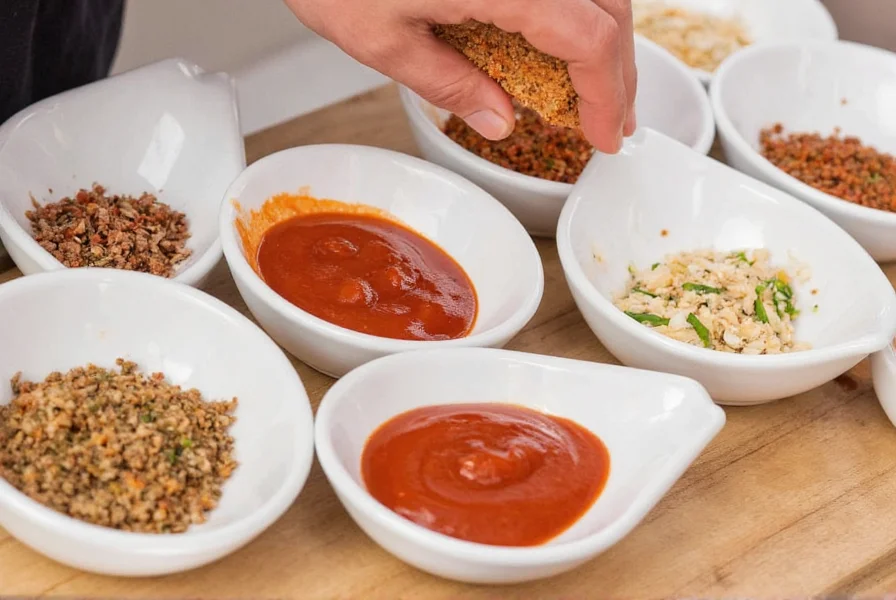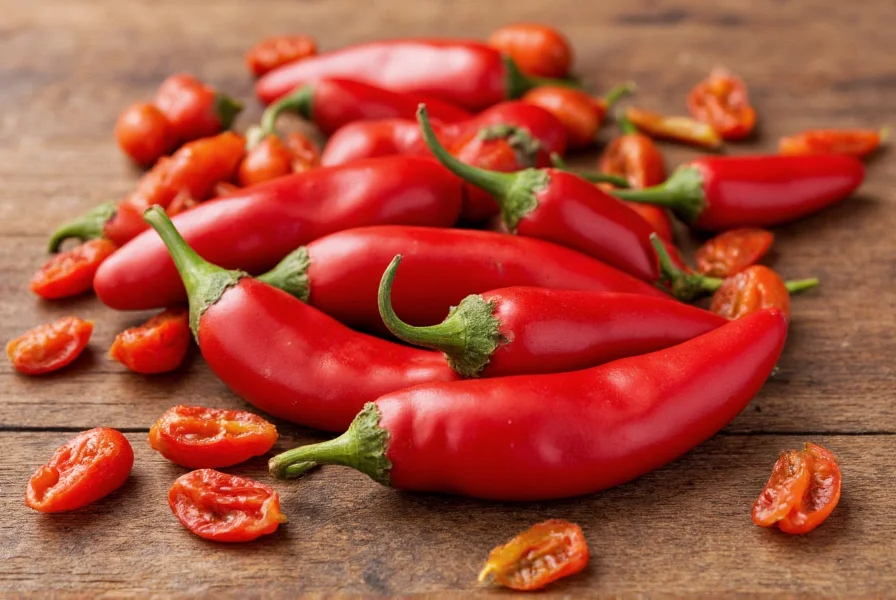When your recipe calls for chipotle peppers but your pantry comes up short, knowing effective alternatives can save your meal. Chipotle peppers—smoked and dried jalapeños—deliver a distinctive blend of heat, smokiness, and subtle sweetness that's challenging to replicate exactly. However, with the right substitutes, you can maintain the spirit of your dish without compromising flavor.
Understanding Chipotle Pepper Flavor Profile
Before selecting a substitute, recognize what makes chipotle peppers unique. They offer:
- Medium heat level (2,500-8,000 Scoville units)
- Pronounced smoky character from mesquite wood smoking
- Earthy, slightly sweet undertones
- Rich, complex depth in sauces and marinades
Effective substitutes must address both the heat component and the essential smokiness. The best alternative depends on whether you need to replace canned chipotles in adobo sauce, chipotle powder, or chipotle hot sauce.
Top Substitutes for Canned Chipotle Peppers in Adobo
Canned chipotles in adobo provide both the peppers and a flavorful tomato-vinegar sauce. When substituting:
| Substitute | Ratio | Best For | Flavor Notes |
|---|---|---|---|
| Smoked paprika + cayenne + tomato paste | 1 tsp smoked paprika + 1/8 tsp cayenne + 1 tbsp tomato paste | Stews, braises, marinades | Closest match for smokiness; adjust cayenne for heat |
| Ancho chili powder + liquid smoke | 1 tbsp ancho powder + 1/4 tsp liquid smoke + 2 tbsp broth | Sauces, soups, rubs | Sweeter profile; use hickory liquid smoke sparingly |
| Guajillo peppers + chipotle powder | 2 rehydrated guajillos + 1/2 tsp chipotle powder | Mexican dishes, moles | Balances fruitiness with smoke; blend for smooth texture |
For the best results when substituting canned chipotles, consider the dish's liquid requirements. In recipes where the adobo sauce contributes significant moisture (like slow-cooked meats), add 1-2 tablespoons of broth or water to maintain proper consistency.

Chipotle Powder Substitutes for Dry Rubs and Seasoning
When your recipe specifies chipotle powder, these alternatives work well:
- Smoked paprika as chipotle powder substitute: Use 1:1 ratio but add 1/8 teaspoon cayenne per tablespoon for heat. Ideal for dry rubs and spice blends.
- Ancho chili powder with smoked salt: Combine 1 tablespoon ancho powder with 1/4 teaspoon smoked salt. Perfect for taco seasoning and grilled meats.
- Regular paprika plus chipotle powder alternative: Mix 2 parts sweet paprika with 1 part cayenne and a few drops of liquid smoke. Great for maintaining color while adding heat.
When substituting in dry applications, remember that chipotle powder has moderate heat. Adjust cayenne gradually, tasting as you go. For sensitive palates, reduce heat elements by 25% and increase smoked components to maintain flavor balance.
Substitutes for Chipotle Hot Sauce
Creating chipotle hot sauce alternatives requires balancing vinegar, heat, and smoke:
- Smoked paprika hot sauce substitute: Blend 1 cup mild hot sauce with 1 teaspoon smoked paprika and 1 minced garlic clove. Let sit 30 minutes before using.
- Adobo-style sauce alternative: Simmer 1/2 cup tomato sauce, 2 tablespoons vinegar, 1 teaspoon smoked paprika, and 1/4 teaspoon garlic powder for 10 minutes.
- Quick chipotle sauce replacement: Mix 3 parts sriracha with 1 part smoked olive oil for immediate use in dressings and dips.
What Not to Use as Chipotle Pepper Substitutes
Avoid these common pitfalls when seeking chipotle alternatives:
- Plain cayenne pepper: Provides heat but lacks smokiness, resulting in one-dimensional flavor
- Regular paprika without smoke element: Missing the essential smoky component that defines chipotle
- Tabasco or other vinegar-based hot sauces: Wrong flavor profile and excessive acidity
- Chipotle powder substitute with too much liquid smoke: Can create an artificial, overpowering smokiness
Adjusting Recipes When Substituting Chipotle Peppers
Successful substitution requires recipe adjustments:
- For slow-cooked dishes: Add substitutes during the last hour of cooking to preserve volatile smoke compounds
- In marinades: Let sit 15-20 minutes before cooking to allow smoke flavors to penetrate
- For sensitive palates: Reduce heat elements by 25% and increase smoked components
- When thickening sauces: Simmer 5-10 minutes after adding substitutes to meld flavors
When using smoked paprika as a chipotle substitute in creamy sauces, bloom the spice in a small amount of warm oil first to maximize flavor extraction before adding to the base.

Practical Applications by Dish Type
Different dishes benefit from specific substitution approaches:
- Taco seasoning: Use smoked paprika with cumin and oregano for authentic flavor
- BBQ sauces: Combine ancho powder with a touch of molasses for depth
- Mayo-based sauces: Blend chipotle powder alternative with lime juice to cut richness
- Bean dishes: Add substitutes early to allow flavors to permeate the beans
- Marinades for fish: Use milder substitutes with reduced heat elements
For the best chipotle pepper substitute in adobo sauce applications, reconstitute dried mild chilies (like guajillo or ancho) and blend with smoked salt, apple cider vinegar, and a touch of tomato paste for texture and color matching.
FAQ
Can I use regular paprika instead of chipotle powder?
Yes, but you'll need to add smoked elements. Combine 1 tablespoon sweet paprika with 1/4 teaspoon liquid smoke and 1/8 teaspoon cayenne pepper for every 1 tablespoon of chipotle powder required. This creates a balanced chipotle powder substitute that works well in dry rubs and spice blends.
What's the best substitute for canned chipotles in adobo sauce?
The most effective substitute combines 1 teaspoon smoked paprika, 1/8 teaspoon cayenne pepper, 1 tablespoon tomato paste, and 2 tablespoons vegetable broth. For texture similar to chopped chipotles, finely dice mild red bell peppers and simmer them in this mixture for 5-7 minutes until softened.
How do I make a chipotle hot sauce alternative without chipotle peppers?
Blend 1 cup of your favorite mild hot sauce with 1 teaspoon smoked paprika, 1 minced garlic clove, and 1/2 teaspoon apple cider vinegar. Let the mixture sit for at least 30 minutes to allow flavors to meld. For thicker adobo-style sauce, add 1 tablespoon tomato paste and simmer for 5 minutes.
Can I use liquid smoke as a chipotle pepper substitute?
Liquid smoke works as part of a chipotle substitute but shouldn't be used alone. Add just 1/4-1/2 teaspoon per cup of sauce or per tablespoon of dry spice blend. Always combine with heat elements (like cayenne) and base flavors (like paprika or tomato) for balanced results. Too much liquid smoke creates an artificial, overpowering flavor.
What's the difference between chipotle powder and smoked paprika?
Chipotle powder is made from smoked and dried jalapeños, providing medium heat (2,500-8,000 Scoville units) with distinct smokiness. Smoked paprika comes from smoked sweet peppers and ranges from sweet (no heat) to hot varieties. While both offer smokiness, chipotle powder brings inherent heat that smoked paprika lacks, requiring additional heat elements when substituting.











 浙公网安备
33010002000092号
浙公网安备
33010002000092号 浙B2-20120091-4
浙B2-20120091-4